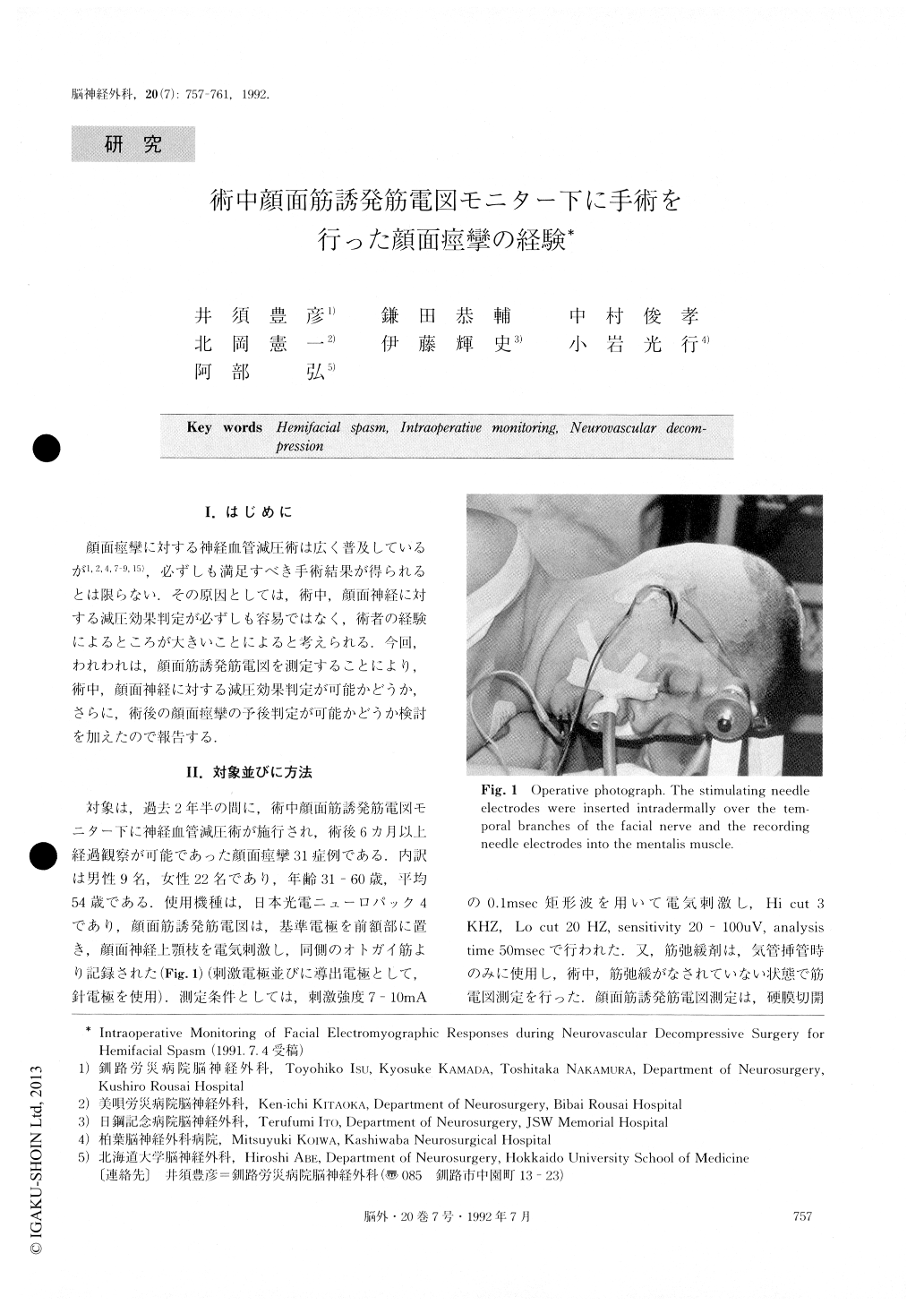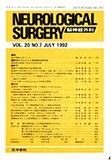Japanese
English
- 有料閲覧
- Abstract 文献概要
- 1ページ目 Look Inside
I.はじめに
顔面痙攣に対する神経血管減圧術は広く普及しているが1,2,4,7-9,15),必ずしも満足すべき手術結果が得られるとは限らない.その原因としては,術中,顔面神経に対する減圧効果判定が必ずしも容易ではなく,術者の経験によるところが大きいことによると考えられる.今回,われわれは,顔面筋誘発筋電図を測定することにより,術中,顔面神経に対する減圧効果判定が可能かどうか,さらに,術後の顔面痙樂の予後判定が可能かどうか検討を加えたので報告する.
In this paper,we reported our experience of intraop-erative facial electoromyographic recordings obtainedduring microvascular decompression for hemifacialspasm.
Materials and Methods
Intraoperative electromyographic recordings from the mentalis muscle during stimulation of the temporal branch of the facial nerve has been attempted in 31 pa-tients. No muscle relaxants were used except for those before intubation. Of 31 patients, 22 were female and 9 were male. The age on admission ranged from 31 to 60 years with a mean of 54 years. Results
① Abnormal response appeared with a latency of ab-out 10 msec after stimulation. This response dis-appeared in 30 out of 31 patients at the end of opera-tion. In 4 patients, the abnormal response disappeared prior to decompression of the nerve.
② 30 patients in whom the abnormal response dis-appeared were free of spasm immediately after surgery. Hemifacial spasm has been relieved in 28 patients with a follow up period of 6 months to 2 years and 7 months. The remaining two patients had mild spasm. The one patient in whom the abnormal response did not disappear had persistent hemifacial spasm. Conclusion
The authors think that intraoperative facial elec-tromyographic recording is useful to identify the blood vessel that is causing the spasm and to ensure that de-compression of the nerve has been accomplished.

Copyright © 1992, Igaku-Shoin Ltd. All rights reserved.


